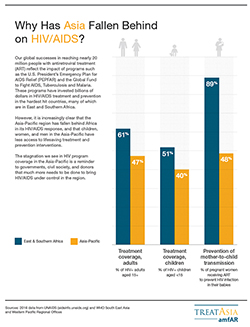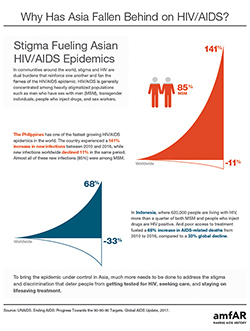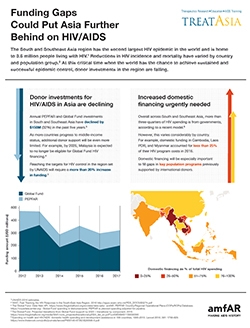Why Has Asia Fallen Behind on HIV/AIDS?
The Asia-Pacific region is home to nearly 60% of the world’s population and more HIV-positive people than any region outside sub-Saharan Africa. While substantial progress has been made in developing comprehensive local, national, and regional responses to HIV, troubling trends in recent years suggest that efforts need to be reinvigorated and better targeted to reach people most at risk.
This series of infographics highlights key factors affecting the HIV/AIDS response in the Asia-Pacific region and opportunities for improvement and expansion.
Why Has Asia Fallen Behind on HIV/AIDS?
The Asia-Pacific region has fallen behind Africa in its HIV/AIDS response, and children, women, and men in the Asia-Pacific have less access to lifesaving treatment and prevention interventions. The stagnation we see in HIV program coverage in the Asia-Pacific is a reminder to governments, civil society, and donors that much more needs to be done to bring HIV/AIDS under control in the region.
Stigma Fueling the HIV/AIDS Epidemic in Asia
In communities around the world, stigma and HIV are dual burdens that reinforce one another and fan the flames of the HIV/AIDS epidemic. To bring the epidemic under control in Asia, much more needs to be done to address the stigma and discrimination that deter people from getting tested for HIV, seeking care, and staying on lifesaving treatment.
Further Behind on HIV/AIDS
The South and Southeast Asia region has the second largest HIV epidemic in the world and is home to 3.5 million people living with HIV. At this critical time when the world has the chance to achieve sustained and successful epidemic control, donor investments in the region are falling.


